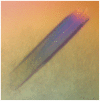The structure of the karrikin-insensitive protein (KAI2) in Arabidopsis thaliana
- PMID: 23349965
- PMCID: PMC3548789
- DOI: 10.1371/journal.pone.0054758
The structure of the karrikin-insensitive protein (KAI2) in Arabidopsis thaliana
Abstract
KARRIKIN INSENSITIVE 2 (KAI2) is an α/β hydrolase involved in seed germination and seedling development. It is essential for plant responses to karrikins, a class of butenolide compounds derived from burnt plant material that are structurally similar to strigolactone plant hormones. The mechanistic basis for the function of KAI2 in plant development remains unclear. We have determined the crystal structure of Arabidopsis thaliana KAI2 in space groups P2(1) 2(1) 2(1) (a =63.57 Å, b =66.26 Å, c =78.25 Å) and P2(1) (a =50.20 Å, b =56.04 Å, c =52.43 Å, β =116.12°) to 1.55 and 2.11 Å respectively. The catalytic residues are positioned within a large hydrophobic pocket similar to that of DAD2, a protein required for strigolactone response in Petunia hybrida. KAI2 possesses a second solvent-accessible pocket, adjacent to the active site cavity, which offers the possibility of allosteric regulation. The structure of KAI2 is consistent with its designation as a serine hydrolase, as well as previous data implicating the protein in karrikin and strigolactone signalling.
Conflict of interest statement
Figures





References
-
- Flematti GR, Ghisalberti EL, Dixon KW, Trengove RD (2004) A compound from smoke that promotes seed germination. Science 305: 977. - PubMed
-
- Nelson DC, Flematti GR, Ghisalberti EL, Dixon KW, Smith SM (2012) Regulation of seed germination and seedling growth by chemical signals from burning vegetation. Annu Rev Plant Biol 63: 107–130. - PubMed
-
- Cook CE, Whichard LP, Turner B, Wall ME, Egley GH (1966) Germination of Witchweed (Striga lutea Lour.): Isolation and properties of a potent stimulant. Science 154: 1189–1190. - PubMed
-
- Cook CE, Whichard LP, Wall ME, Egley GH, Coggon P, et al. (1972) Germination Stimulants.II. Structure of strigol a potent seed-germination stimulant for witchweed (Striga-Lutea Lour). J Am Chem Soc 94: 6198–6199.
Publication types
MeSH terms
Substances
LinkOut - more resources
Full Text Sources
Other Literature Sources
Molecular Biology Databases

